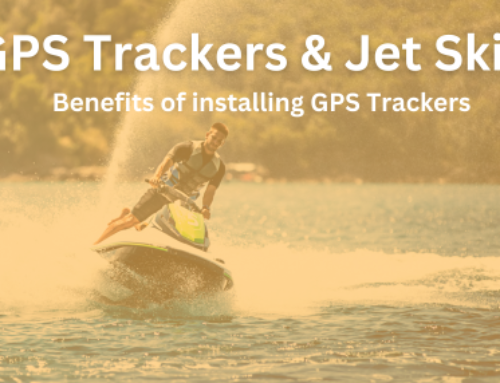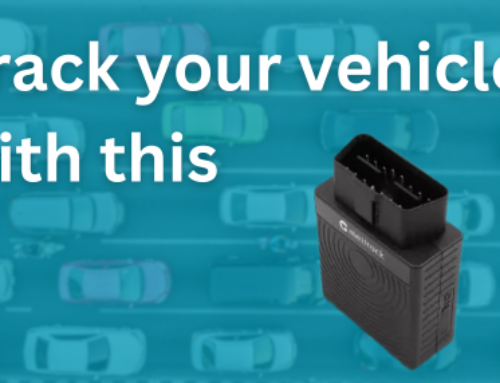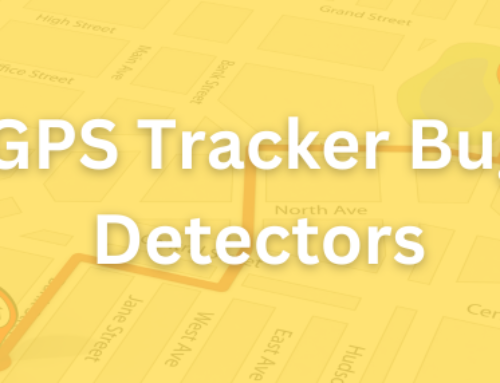Say goodbye to getting lost or wasting precious riding time trying to find your way. Motorcycle GPS tracking systems come equipped with turn-by-turn directions, detailed maps, and even voice prompts, making it easy to navigate unfamiliar roads and discover new routes. Additionally, these systems offer live traffic updates, allowing you to avoid congestion and stay on schedule.
But that’s not all. Motorcycle GPS tracking systems also offer advanced safety features such as crash detection and emergency assistance. If the unfortunate happens, your system will immediately notify emergency services with your precise location, potentially saving your life.
Whether you’re a speed demon craving adrenaline-pumping adventures or simply enjoy a leisurely ride through scenic landscapes, investing in a motorcycle GPS tracking system is a smart move. Stay on track, stay safe, and take your riding adventure to new heights with the ultimate guide to motorcycle GPS tracking systems.
Benefits of using a motorcycle GPS tracking system
A motorcycle GPS tracking system offers numerous benefits to riders of all levels. Firstly, it provides accurate and reliable navigation, ensuring that you never lose your way. Whether you’re exploring new territories or commuting through busy city streets, the turn-by-turn directions and detailed maps guide you to your destination with ease. Additionally, voice prompts provide real-time instructions, allowing you to keep your eyes on the road and hands on the handlebars.
Another significant benefit of a motorcycle GPS tracking system is its ability to provide live traffic updates. Traffic congestion can put a damper on any ride, but with a GPS tracking system, you can avoid traffic hotspots and take alternative routes to stay on schedule. This feature is particularly useful when embarking on long rides or planning road trips, as it helps optimize your journey and ensure a smooth riding experience.
Safety is a top priority for any rider, and a motorcycle GPS tracking system offers advanced safety features to provide peace of mind. These systems often come equipped with crash detection technology, which can detect sudden impacts or accidents. In the event of a crash, the system automatically sends an alert to emergency services with your precise location, enabling a faster response time and potentially saving your life. Additionally, some GPS tracking systems offer emergency assistance features, allowing you to call for help at the press of a button.
Features to consider when choosing a motorcycle GPS tracking system
When choosing a motorcycle GPS tracking system, it’s essential to consider the specific features that cater to your riding needs. Here are some key features to look out for:
- Waterproof and rugged design: Motorcycles are exposed to various weather conditions, so it’s crucial to choose a GPS tracking system that is waterproof and built to withstand vibrations and shocks. Look for systems with an IPX7 or higher rating to ensure durability and reliability.
- Real-time traffic updates: To avoid traffic congestion and plan your rides effectively, opt for a GPS tracking system that provides live traffic updates. This feature allows you to choose alternative routes and save time on the road.
- Turn-by-turn directions and voice prompts: Ensure that the GPS tracking system offers clear and concise turn-by-turn directions, accompanied by voice prompts. This allows you to navigate without distractions and stay focused on the road.
- Offline maps and route planning: While riding in remote areas or areas with poor network coverage, having offline maps and the ability to plan routes is crucial. Look for GPS tracking systems that offer offline map storage and route planning functionalities.
- Crash detection and emergency assistance: Safety should always be a priority when riding. Choose a GPS tracking system that incorporates crash detection technology and offers emergency assistance features. These features can save your life in critical situations.
- Battery life: Consider the battery life of the GPS tracking system, especially for long rides or multi-day trips. Look for systems that offer a long-lasting battery or the ability to charge while riding.
By considering these features, you can select a motorcycle GPS tracking system that best suits your riding style and requirements.
How motorcycle GPS tracking systems work
Motorcycle GPS tracking systems utilize a combination of satellite signals and cellular networks to determine the precise location of your motorcycle. These systems rely on GPS (Global Positioning System) satellites to receive signals and calculate your coordinates. The GPS receiver in the tracking system then processes this information to provide accurate positioning data.
Once the GPS tracking system has determined your location, it uses cellular networks to transmit this information to a central server. This server acts as a hub, collecting and storing the data from various tracking devices. The server can then be accessed through a web portal or mobile application, allowing you to monitor and track your motorcycle in real time.
To ensure continuous tracking, motorcycle GPS tracking systems often come with a built-in SIM card or require a separate SIM card for cellular connectivity. This SIM card enables the tracking system to communicate with the cellular network and transmit location data.
Some tracking systems offer additional features such as geofencing, which allows you to set virtual boundaries for your motorcycle. If your bike exceeds these boundaries, you receive an alert on your mobile device. This feature is particularly useful for preventing theft or unauthorized use of your motorcycle.
Overall, motorcycle GPS tracking systems provide a seamless integration of satellite technology and cellular networks to deliver accurate and reliable tracking information.
Installing a motorcycle GPS tracking system
Installing a motorcycle GPS tracking system requires careful consideration and attention to detail. Here are some general steps to follow when installing a GPS tracking system on your motorcycle:
- Choose the ideal location: Select a suitable location on your motorcycle to mount the GPS tracking device. It should be secure, easily accessible, and provide optimal signal reception. Common mounting locations include the handlebars, under the seat, or on the dashboard.
- Prepare the mounting surface: Ensure that the mounting surface is clean and free from any debris or dirt. This allows for a secure and stable attachment.
- Secure the device: Attach the GPS tracking device to the chosen location using the provided mounting brackets or adhesive. Make sure it is firmly secured and does not obstruct any controls or the rider’s line of sight.
- Connect the power source: Depending on the GPS tracking system, you may need to connect it directly to the motorcycle’s battery or use a separate power source. Follow the manufacturer’s instructions carefully to ensure a proper connection without risk of damage or power drainage.
- Test the system: After installation, test the GPS tracking system to ensure it is functioning correctly. Check for accurate positioning, reliable signal reception, and proper communication with the server or mobile application.
It is important to note that installation procedures may vary depending on the specific GPS tracking system you choose. Always refer to the manufacturer’s instructions for detailed installation guidelines and consult a professional if needed.
Tips for using a motorcycle GPS tracking system effectively
To make the most out of your motorcycle GPS tracking system, consider these tips for effective usage:
- Plan your routes: Before setting off on a ride, take advantage of the GPS tracking system’s route planning capabilities. This allows you to pre-determine your path, add waypoints, and explore scenic routes or points of interest along the way.
- Customize your settings: Familiarize yourself with the various settings and customization options available on your GPS tracking system. Adjust the screen brightness, language preferences, and audio prompts to suit your needs and preferences.
- Regularly update maps and software: Keep your GPS tracking system up to date by regularly downloading the latest maps and software updates. This ensures accurate navigation and access to new features and improvements.
- Use offline maps: When riding in areas with poor network coverage, download offline maps to your GPS tracking system. This allows you to navigate without relying on a stable internet connection.
- Practice safe riding habits: While a GPS tracking system provides valuable navigation and safety features, it is essential to prioritize safe riding habits. Avoid constantly checking the GPS screen while riding and ensure that your focus remains on the road.
By following these tips, you can maximize the benefits of your motorcycle GPS tracking system and enjoy a safer and more enjoyable riding experience.
Conclusion: Enhance your riding experience with a motorcycle GPS tracking system
In conclusion, a motorcycle GPS tracking system is a valuable tool that enhances your riding adventure in numerous ways. From accurate navigation and real-time traffic updates to advanced safety features and peace of mind, these systems offer a range of benefits for riders of all levels. By selecting a GPS tracking system with the right features, installing it correctly, and utilizing it effectively, you can revolutionize your riding experience and explore new horizons with confidence. So, rev up your riding adventure, stay on track, and take your motorcycle journey to new heights with a reliable GPS tracking system. Happy riding





Leave A Comment